Are you looking to buy a portable air conditioner for an attic bedroom? Or perhaps you’re planning to equip your camper with a portable air conditioner, but you're wondering how big these ACs are. Wonder no more because we researched this question and have the answer for you below.
The smallest portable air conditioner is Black+Decker BPACT08WT at 4,000 BTU, while the biggest is Honeywell HJ5CESWK0 at 15,000 BTU.
There are models with interesting features that make them attractive to prospective buyers. Read on if you’re planning to buy a portable air conditioner, the succeeding sections will give you information on the different portable air conditioners that you can choose from.
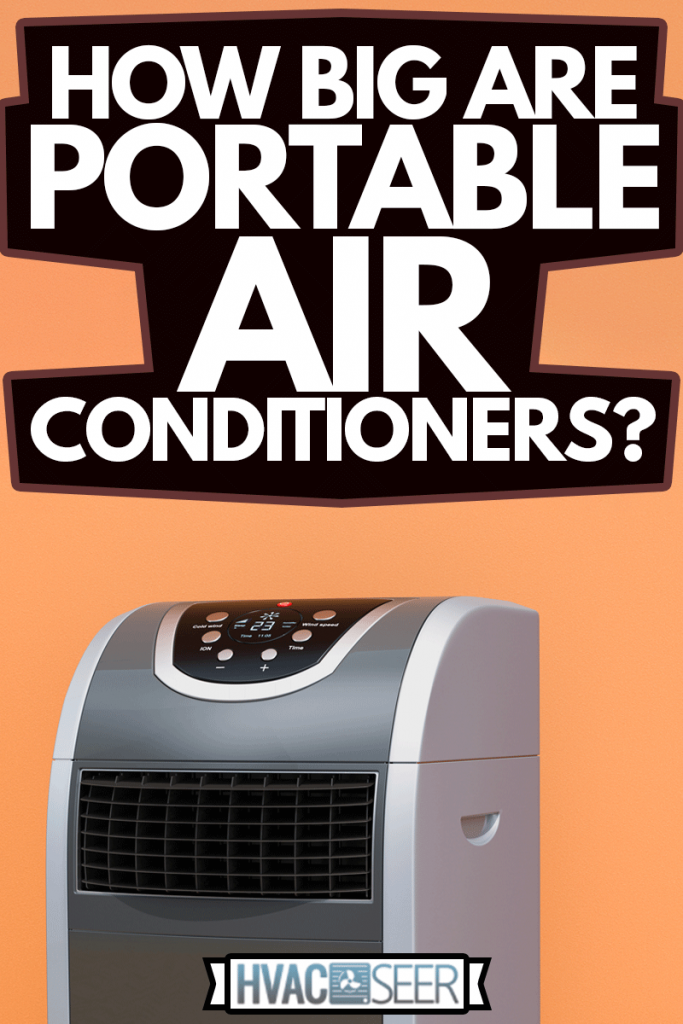
What are the smallest air conditioners available in the market?
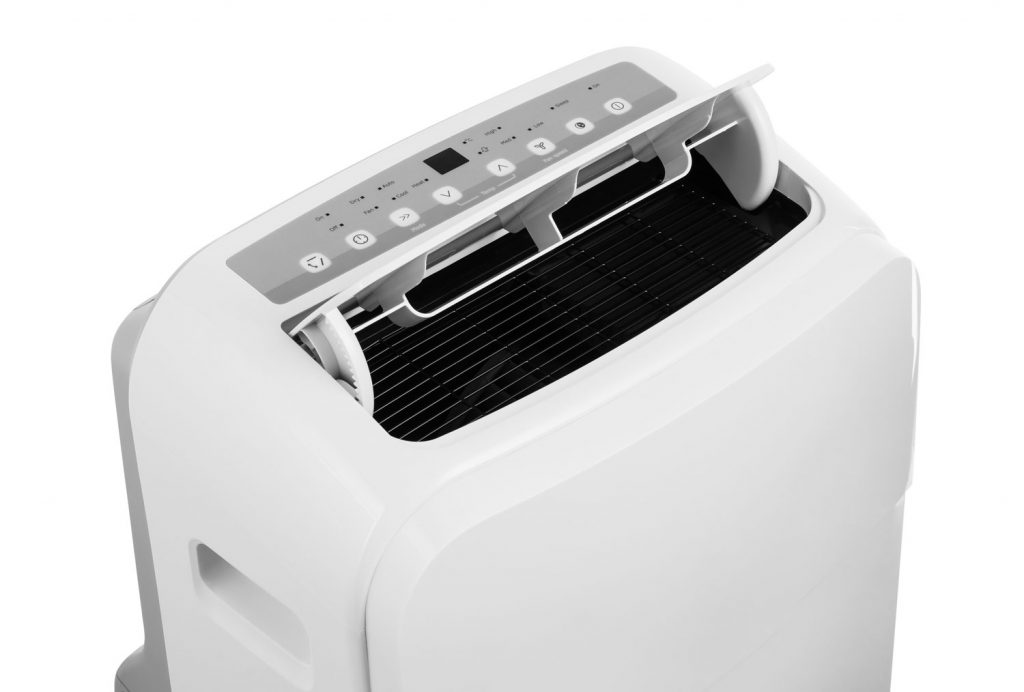
Before we delve into the differences between a portable air conditioner and a regular air conditioner, let's look at the size and features of the smallest air conditioners in the market today. Keep in mind that the name portable air conditioner can be misleading because some of these units can weigh around 80 lbs. or more.
And similar to regular air conditioners, it is important to get the right size of portable air conditioner for the size of the room that it will need to cool. According to Energy Saver (U.S. Department of Energy's consumer resource on saving energy), a portable air conditioner that is too big for what you need will make a room feel more uncomfortable in addition to the AC being less efficient.
Black+Decker BPACT08WT
- This is one of the smallest available portable air conditioners. At 4000 BTU, it is powerful enough to cool a room that is 100 to 150 square feet.
- Its dimensions are 16.5" X 11.5" X 26" (WxDxH). Additionally, it weighs 52.9 lbs.
- It has a 24-hour timer that allows you to control the temperature more precisely.
- It has three separate modes—cool, fan, and dehumidifying. The dehumidifying mode allows it to dehumidify a room without cooling the area.
- Additionally, its filters are reusable and washable.
- This unit is also available in different sizes—from 5,500 BTU to 7,700 BTU.
Check it on Amazon through this link.
Honeywell HL09CESWK
- Most manufacturers and retailers consider 9,000-BTU portable air conditioners the uppermost limit for small portable air conditioners. Medium portable air conditioners start at 10,000 BTU.
- The Honeywell HL09CESWK is powerful enough to cool a room with a floor area that is between 300 to 400 square feet. Like the first two portable air conditioners, the Honeywell HL09CESWK also has three operating modes.
- It is equipped with dual air filters that are reusable and washable. Additionally, it has a remote where the 24-hour timer can be set.
- It has an automatic evaporation mode that takes care of the water in its drip tray. This means that you don’t have to manually empty the drip tray. However, keep in mind that its auto evaporation mode might not be able to evaporate water fast enough when you use the dehumidifier mode in a very humid room.
- Its dimensions are 18.9" width, 15.7" depth, and 31.3" height. It weighs 64 lbs.
Check it out on Amazon through this link.
What are the biggest portable air conditioners available today?
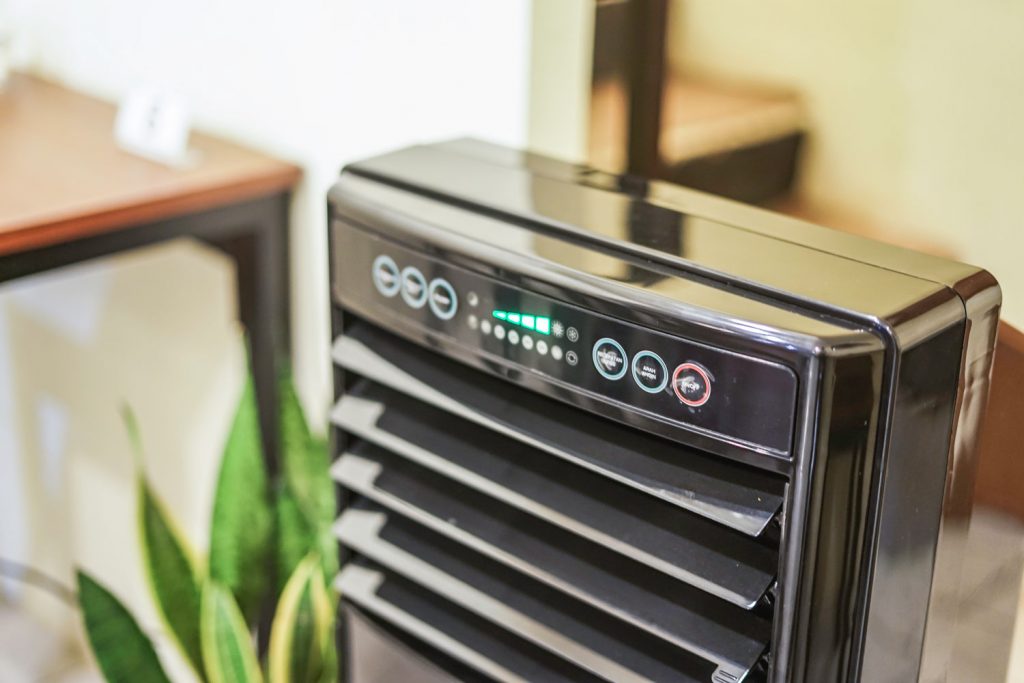
Let’s look at what the biggest portable air conditioners can offer and compare it with what we had from the smallest portable air conditioners.
Honeywell HJ5CESWK0
- Many reviews considered the Honeywell HJ5CESWK0 as the most powerful portable air conditioner. And this is not exaggerated with its 15,000 BTU capacity.
- The second biggest portable air conditioner produces 1,000 but less than the Honeywell HJ5CESWK0. Moreover, it is powerful enough to match the capacity of regular mid-sized mini-split air conditioners.
- The Honeywell HJ5CESWK0 can cool a room with a floor area of around 775 square feet. The floor area that it can cover is enough for two to three rooms if there is enough airflow between them.
- Additionally, it is quiet for its size at only 55 dB noise levels.
- Its dimensions are 18.9" X 15.4" X 30.7" (WxDxH). It weighs 79 lbs.
Check it on Amazon through this link.
Whynter ARC-14SH
- The Whynter ARC-14S is another 14,000 BTU portable air conditioner that can cool a room with a floor area of up to 500 square feet. It is one of the most efficient portable air conditioners available in the market today.
- One of its most amazing features is that it has an EER rating of 10.8. This means that it uses up to 20% less energy to operate than most standard units—portable or not—that have the same BTU rating. One of the things it does to achieve this efficiency rating is to use a dual hose system to quickly release warm air into the outside atmosphere.
- In addition to the usual three operating modes that are also present in the first two units, it can also produce heat up to 77 degrees. This makes it an all-year-round portable air cooling/heating unit.
- Moreover, its dehumidifier mode has a capacity of 71 pints per day.
- It was awarded as the Best Overall Portable Air Conditioner and Best Portable Air Conditioner for High Humidity for 2022 by Good Housekeeping.
- Its thermostat can be programmed to automatically turn it on or off at specific times of the day. Additionally, its noise level is at less than 56 dB.
- The dimensions of the Whynter ARC-14SH are 19" X 16" X 35.5" and weighs 80 lbs.
- It uses a carbon air filter and a washable pre-filter.
- The Whynter ARC-14SH also comes with a storage bag that will protect it from dust and damage while it is in storage.
Check it on Amazon through this link.
What makes a portable air conditioner different from a regular air conditioner?
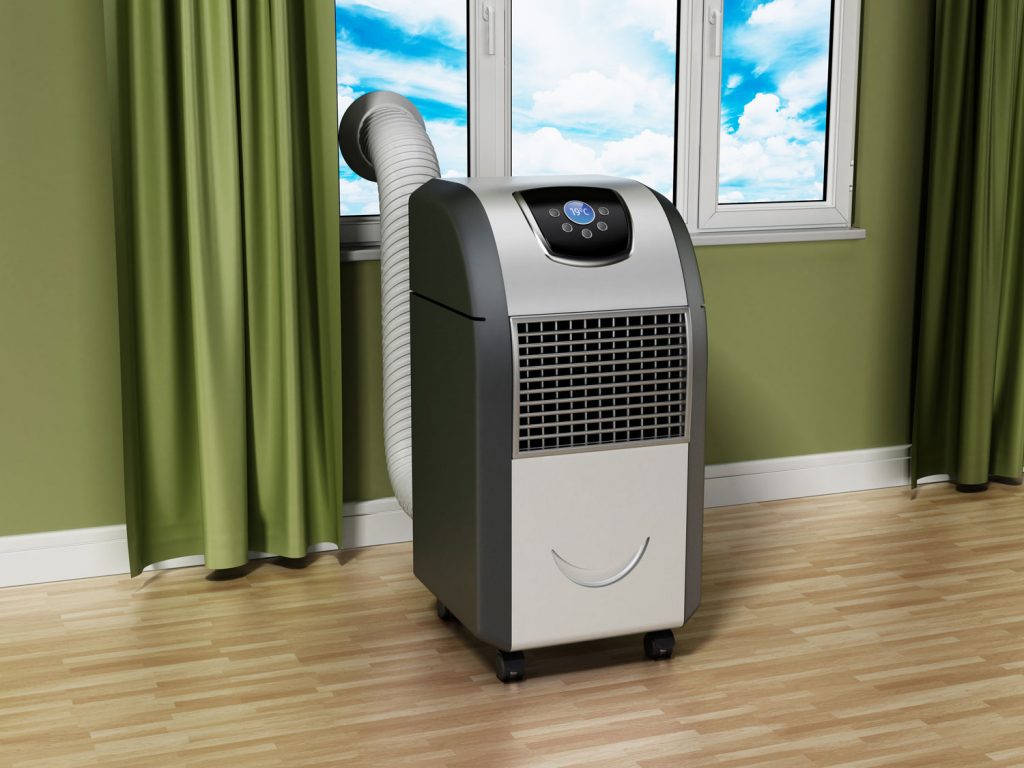
Aside from the different sizes or dimensions, have you ever wondered what is the main difference between a window air conditioner and a portable air conditioner? Do they work the same way?
Both types use the same cooling principle and method. But the main difference between a regular window air conditioner and a portable air conditioner is how they handle water and warm air.
Handling water
Both types will slowly accumulate water as part of the cooling process. Water comes from condensation, which is the result of warm air being cooled by the evaporator coil.
Both types have a drip tray that collects accumulated water where the fan can pick it up later to cool the condenser coil. However, the drip tray will still get filled with water eventually.
A portable air conditioner will need human intervention to drain the accumulated water. Some portable air conditioners have the option to connect it to a water drain, but water drains are not common in most bedrooms.
A regular window air conditioner doesn’t need any human help to empty its drip tray because around 70% of its casing is outside the window already. It can just let the water drip outside.
Handling warm air
Air conditioners—portable or regular window air conditioners—cool our homes using refrigerants that can shift their state fast. It can change from a liquid state to a gas state and vice versa. Refrigerants pass through cooling coils in liquid form that absorb heat from the air.
It changes from liquid to gas as it absorbs heat. The compressor then takes the gaseous refrigerant and applies pressure to it. It then pushes heat out the exhaust.
A portable air conditioner has an exhaust hose or vent that is connected to a window frame. This is where the portable air conditioner releases warm air.
A regular window air conditioner doesn’t need to do anything because a large portion of its structure is already outside the window. It can freely release warm air outside the house without any intervention.
What to consider when buying a portable air conditioner?
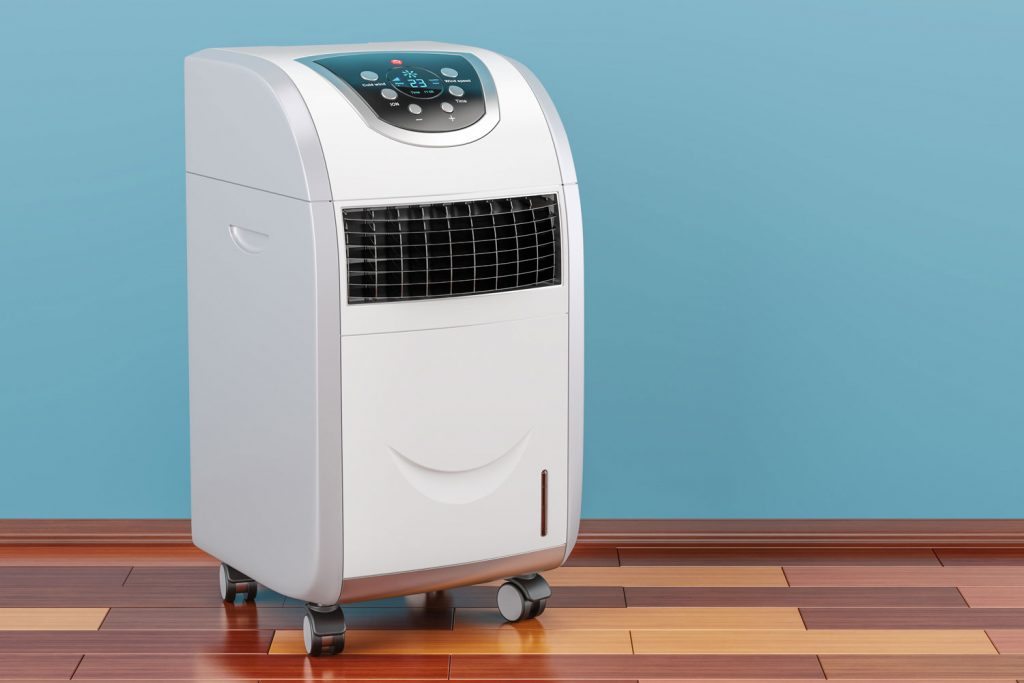
Portable air conditioners are great because they are easy to install and give instant cooling even without access to central air conditioning. However, the size of the room and the capacity of the air conditioner should still be matched.
Consider the placement of your portable air conditioner. They are ideally placed near a window to easily install the exhaust.
If you’re concerned about noise, check the noise level or sound rating of the portable AC. Take note that 45 dB is the normal rating for quiet portable air conditioners.
Conclusion
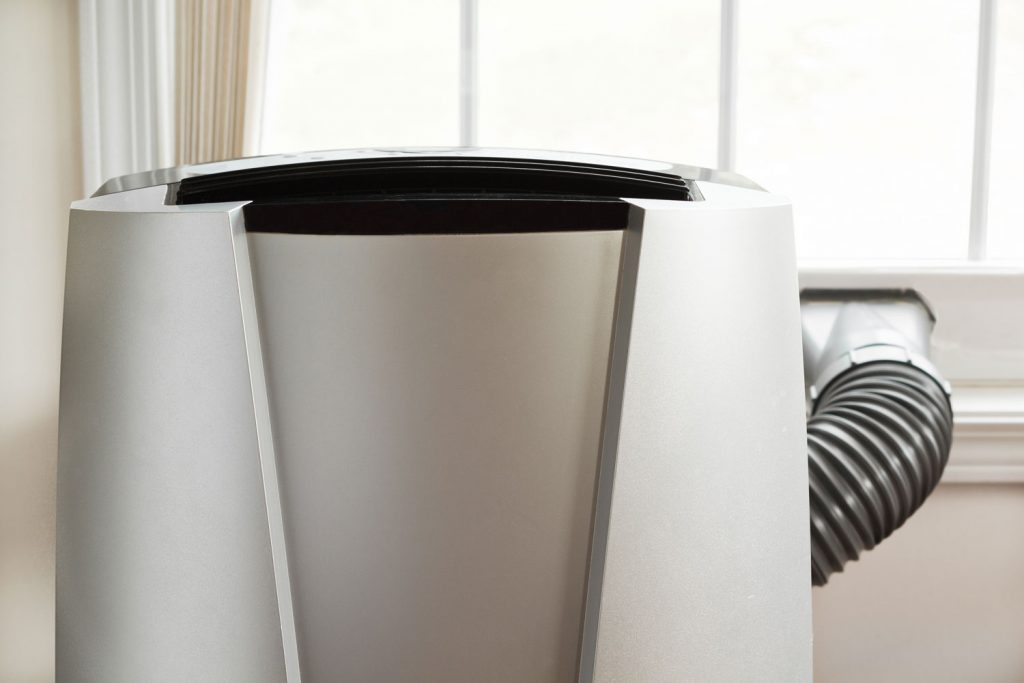
The different size options of portable air conditioners make them ideal for cooling a room that does not have access to a central AC system.
If you liked this article, here are some related articles that you might find interesting:
Portable Air Conditioner Leaking Water – What Could Be Wrong?




